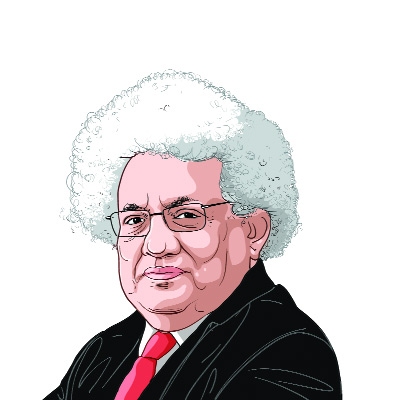Opinion The spectre of a dome
A spectre haunts India. It is the spectre of the dome of a disused mosque surrounded by a mob which has just destroyed it.
A spectre haunts India. It is the spectre of the dome of a disused mosque surrounded by a mob which has just destroyed it. It is a messy picture but it is always reproduced ,every time the issue comes up. India goes into a frenzy of fear and faith. History is bowdlerised and amateur lawyers abound.
Now the fear has led to a false solution. The Supreme Court will pronounce on deferment on September 28. Yet,the spectre has not been put back in the closet.
The fear goes to the heart of the narrative of India as a nation. Though the Congress had agreed to Partition,it has blamed Jinnah,the British and whoever else it could,but itself. Post-Partition,Nehru had to invent a new narrative of why India was a secular syncretic nation which combined seamlessly the two major religions. It was not,however,the whole story,certainly not the whole history.
To begin with,it is just a Doab-Punjab story. South India has a very different story to tell about the Hindu-Muslim encounter. But even the history of the North has been a mixed one of conflict and co-existence,with good tolerant Mughal kings like Akbar and intolerant ones like Aurangzeb. Yet,Aurangzeb came the closest to creating the largest empire on the Indian subcontinent under a single Indian ruler.
Nehru was an atheist and did not care for religion. He chose the Ashok Chakra as Indias national symbol since as a Buddhist,Ashoka,comes closest to a neutral religious icon,affirming Indias ancient history without endorsing its Hindu nature.
Nehru did this to protect the large Muslim minority. He also thought of Hindu saints and swamis as obscurantist and had no time for them. This was,however,true only of him. For the rest of the Congress,secularism was a way of securing the Muslim vote bank while carrying on with their Brahminic practices.
No one took Hindu Mahasabha or Jan Sangh seriously during Nehrus days. Even Indira Gandhi managed to keep them down until the Emergency. It was that which gave the Jan Sangh its nationalist credentials. As the BJP,it used these credentials ruthlessly through the 1980s,carrying on a quiet propaganda campaign against the pseudo-secularism of the Congress. It argued that secularism was not necessary to be patriotic. Its pressures got to Rajiv Gandhi who was a modernist but did not have his grandfathers intellectual contempt for religion. He just let it be and we had Ram Lalla.
Once the Congress lost its hegemony,then the BJP knew its time had come. It used the religious card to the hilt and rode the tiger which smashed the mosque in December 1992. What that event did was to pose a challenge to everyone to say clearly what they thought India wasa secular syncretic nation or a Hindu nation which lost its power in the first millennium and did not gain it back till the end of the second one.
This issue will not go away by postponing the decision on the mosque. Before September 24,there was a presumption that the verdict will favour the Wakf Board. It has the title to the property which is described in 19th century documents as Masjid-e-Janmasthan. All secularist Indians would love that. The need is to think ahead of what would be the case if the decision eventually went in favour of the VHP?
There is a precedent for such a judgment. In Australia,there was the famous Mabo judgment sometime in the early 1990s pertaining to the property rights of the Aborigine tribes. After the Colonists arrived in the late 18th century,they took over the common land. The courts ruled that the possession had been illegal for all the time it had been in effect. The argument was not that we care more now for human rights of the Aborigines. The courts pointed out that even from the point of view of 18th century law,this possession was illegal.
Could India cope with a judgment that the land on which the mosque was built was the common property of the people of Ayodhya and had been acquired illegally by force? This is the challenge which has to be faced.





